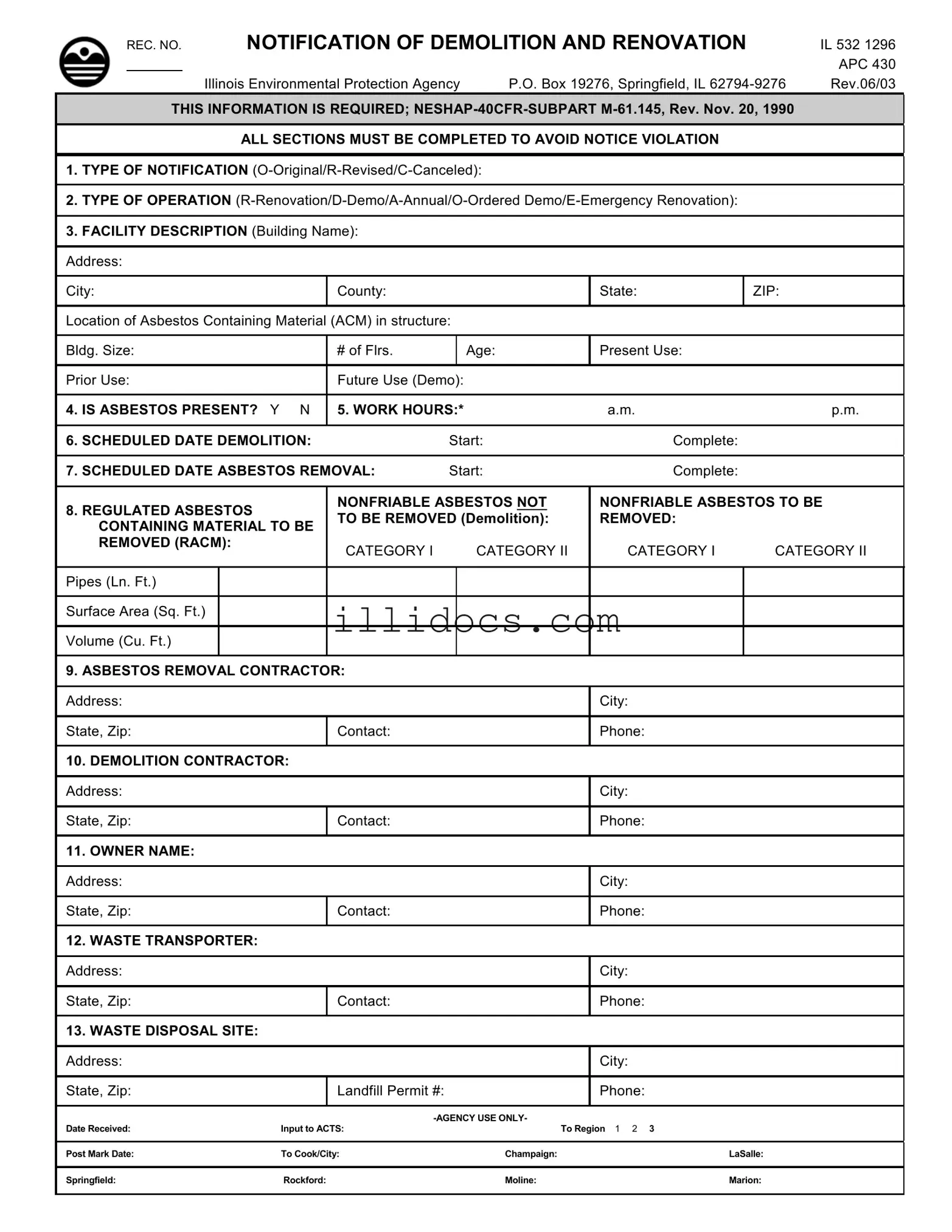What is the purpose of the Illinois APC 430 form?
The Illinois APC 430 form is used to notify the Illinois Environmental Protection Agency (EPA) about planned demolition or renovation activities that may involve asbestos. It ensures compliance with federal regulations regarding the handling of asbestos-containing materials, helping to protect public health and the environment.
Who needs to fill out the APC 430 form?
Any owner or operator planning to demolish or renovate a building that may contain asbestos must complete the APC 430 form. This includes contractors and property owners who are responsible for the project. The form must be submitted to the Illinois EPA to avoid violations and ensure proper handling of asbestos materials.
What information is required on the APC 430 form?
The form requires various details, including the type of notification (original, revised, or canceled), the type of operation (renovation, demolition, etc.), facility description, presence of asbestos, scheduled dates for demolition and asbestos removal, and contractor information. Additionally, it requires a description of the planned work and procedures for handling unexpected asbestos findings.
Is there a fee associated with submitting the APC 430 form?
Yes, there is a filing fee of $150 that must be submitted with each initial notification. This fee is required for the 10-working day notification mandated by the asbestos NESHAP. Payments should be made by check payable to the Illinois EPA, and cash or credit cards are not accepted.
What happens if the APC 430 form is not properly filed?
If the APC 430 form is not submitted correctly or if the filing fee is not included, the notification will be deemed improperly filed. This could lead to potential violations and delays in the demolition or renovation process, as well as fines or other penalties.
What should I do if unexpected asbestos is found during the project?
The form requires a description of procedures to follow if unexpected asbestos is discovered. This includes stopping work immediately and notifying the appropriate authorities. A trained representative must be on-site to manage the situation and ensure compliance with safety regulations.
